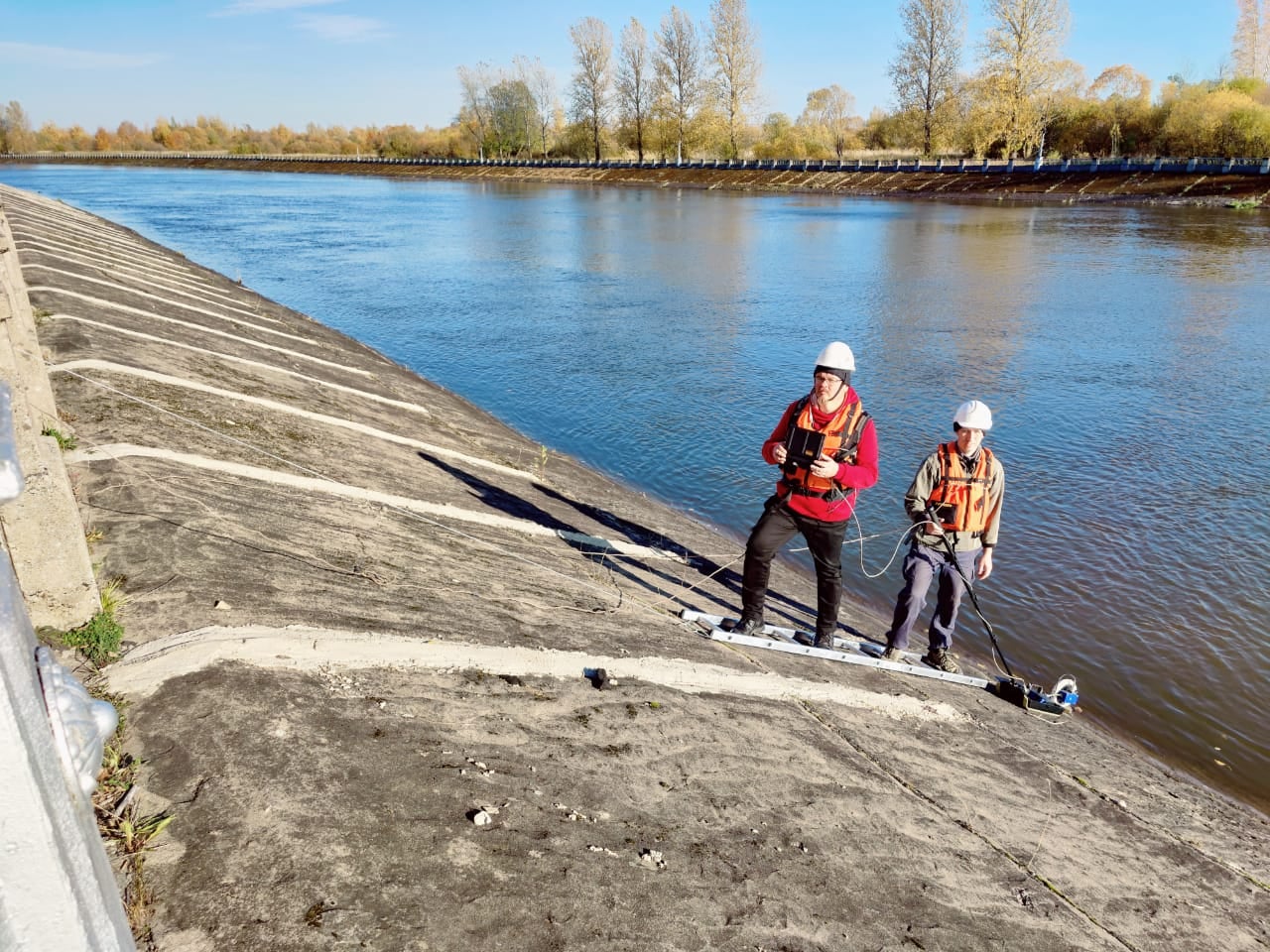Experimental and methodological work with the underwater OKO-3 Nautilus antenna

The OKO-3 Nautilus antenna, with a central frequency of 700 MHz, is designed for the inspection of underwater structures.
At this particular site, our specialists surveyed a section of the supply canal located at the hydroelectric power plants. They examined the underwater sections of the canal and the concrete structure of the banks. In addition to the Nautilus antenna within the canal, AB-400 and AB-1700 antennae were used for the canal banks sections of the canal. In situ topographic referencing was conducted using a differential GPS receiver.
The survey consisted of 143 transverse and 7 longitudinal profiles, with a total length of 1065m for the transverse profiles (using all three antennae).
The AB-700 Nautilus surveying was carried out in profiling mode, in which the device is pressed tightly against the canal bed and concrete structures, and is moved continuously along the observation profile at a speed of approximately 3 km/h (depending on the selected survey parameters and surface conditions). While surveying the canal bank areas, the antennae were moved over the surface of concrete slabs.
The thickness of the lining and sand-gravel layers were thus determined. The canal bank area has a lining thickness of approximately 10cm, and a sand-gravel thickness of 60-80cm, while the lining of the submerged section is approximately 15cm thick, with a 40-50cm thick sand-gravel layer.
Detailed schematics have since been created showing the location of defects and distribution of contact conditions of the canal lining, which will accurately inform future reconstruction work at the site.



